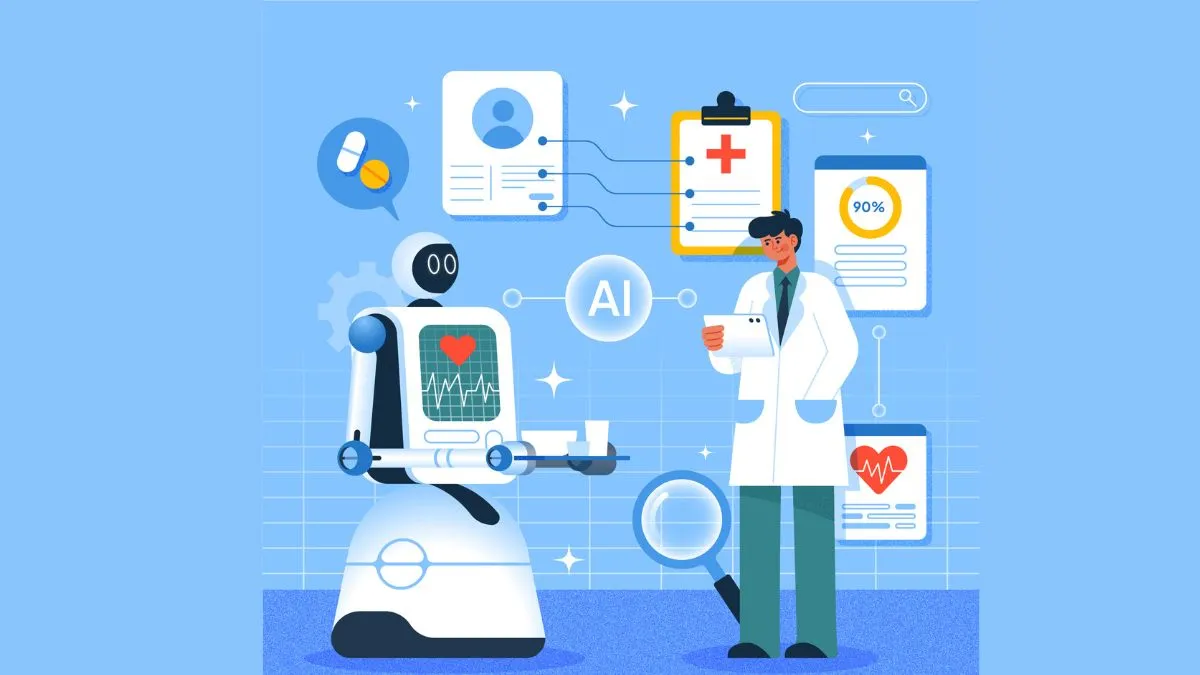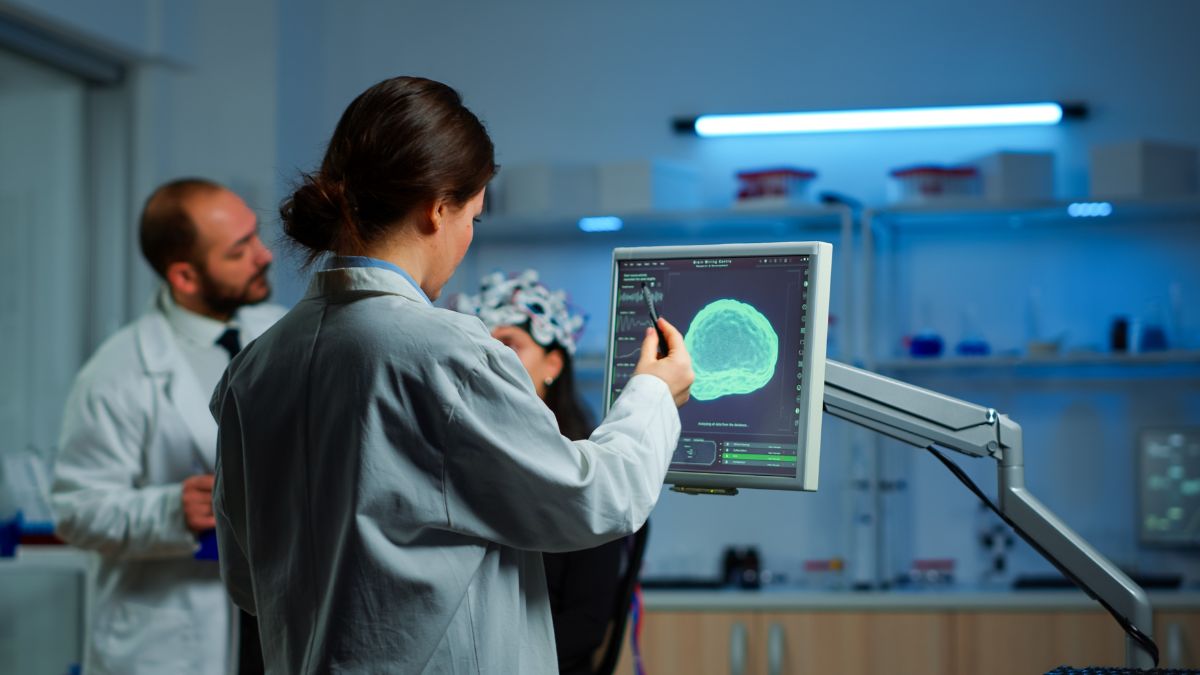
In recent years, India has emerged as a vibrant hub for digital innovation in healthcare. From AI-powered diagnostic platforms to mobile health screening units equipped with machine learning algorithms, technology is actively revamping the country’s approach to clinical care. Start-ups, hospitals, and research institutions are collaborating to build scalable, affordable tools that can identify diseases early, personalise treatment pathways, and reduce the burden on overworked medical staff. These efforts entail a paradigm shift in how healthcare is delivered, particularly in diagnostics.
Table of Content:-
This technological momentum couldn’t be arriving at a more critical juncture. While India has made commendable strides in expanding healthcare access, the reality on the ground remains sobering. For every 100,000 people, there are only about 64 doctors, a number that falls far short of the WHO’s recommended threshold. In rural areas, patients often travel hours to see a specialist or wait days for a basic diagnostic report, turning what should be early detection into delayed care. These gaps are felt in everyday moments of uncertainty, untreated symptoms, and missed diagnoses. Against this backdrop, Artificial Intelligence (AI) in healthcare is emerging as a vital partner in extending the reach, speed, and precision of diagnostic services. We spoke to Mr. Deepak Sahni, Founder & Chairman, Healthians & Dr. Sonal Gaur Saxena, Consultant Pathologist to add their expertise on the topic.
Beyond Assistance: AI as a Collaborative Diagnostic Partner
Traditionally, diagnostics have hinged on human interpretation, whether it’s a radiologist reading an X-ray or a pathologist examining a biopsy slide. These professionals bring years of training and experience to each image they review, but even the most skilled eye can miss what’s subtle or be slowed by exhaustion. Globally, diagnostic errors contribute to an estimated 5–10% of patient deaths, a reminder of how high the stakes truly are. In India’s rural regions, where there may be fewer than one radiologist per 100,000 people, delays and inconsistencies comprise moments of anxiety for families waiting for answers, and often, for care. This is where AI can function as a trusted partner that lightens the load, sharpens precision, and helps ensure that no one falls through the cracks.
Also Read: AI In IVF: How Artificial Intelligence Is Improving Embryo Selection And Pregnancy Outcomes

Trained on millions of medical images, today’s algorithms can spot signs of diseases like pneumonia, tuberculosis, or breast cancer with accuracy that often matches, and sometimes even exceeds, human experts. A recent multi-centre study in India showed that an AI tool used to read chest X-rays could detect lung abnormalities with over 95% sensitivity. But the real value lies in how these tools work alongside clinicians. They generate structured reports, suggest how severe a condition might be, and even create visual “heatmaps” that highlight areas of concern. Imagine a faint shadow on a lung scan, something easy to miss during a hectic day. The AI draws attention to it, helping the doctor zero in on what matters most. It’s like having an extra set of trained eyes, tireless, fast, and always focused.
Democratising Access Through AI-Driven Diagnostics
What makes India a particularly relevant stage for AI-led diagnostics is not just the size of its population, but its diversity of languages, geographies, and healthcare infrastructure. While metropolitan centres have access to advanced imaging and skilled clinicians, rural and peri-urban regions often lack even basic pathology services. In this regard, AI has begun to decentralise diagnostics, bringing capabilities once confined to urban hospitals into remote clinics and even mobile screening units.
A compelling example is the use of AI in diabetic retinopathy screening. In collaboration with leading tech giants and Indian start-ups, AI tools have been deployed via handheld fundus cameras at primary care centres, enabling frontline workers to identify high-risk patients who would otherwise remain undiagnosed until irreversible damage occurs. By embedding AI at the point of care, these solutions shorten the time from screening to referral and reduce the burden on tertiary institutions.
Also Read: Can Talking To AI Really Help Your Mental Health? Expert Weighs In
Operational Efficiencies: Optimising Time and Talent
For overburdened health systems, diagnostic speed matters nearly as much as diagnostic accuracy. AI can analyse thousands of patient records, scans, or lab results in minutes, far faster than even the most experienced clinician. In settings like emergency rooms or mass health camps, where time is a limiting factor, this speed can be lifesaving.
AI is also helping optimise clinician time by automating low-complexity tasks. Natural language processing tools are being used to auto-generate structured radiology reports, flag abnormal results for immediate review, and triage cases based on severity. Hospitals piloting these systems in India have reported a significant reduction in radiologist reporting time. This allows for more efficient patient follow-ups and alleviates clinician fatigue, a leading factor in medical errors.
Guardrails for Growth: The Ethical and Regulatory Imperative
The power of AI demands responsibility. As adoption increases, so does the need for strong data governance, algorithmic transparency, and clinician oversight. Indian policymakers are beginning to engage with these challenges. The National Digital Health Blueprint outlines principles for privacy, consent, and interoperability, but implementation remains a work in progress.
Also Read: AI in Women’s Health: Early Detection And Better Outcomes
Moreover, the issue of algorithmic bias cannot be ignored. AI models trained on datasets from Western populations may not perform equally well in Indian contexts. There is a growing call for locally sourced, demographically diverse datasets to ensure that AI tools are both effective and equitable. Global collaboration in model validation and the creation of region-specific benchmarks could go a long way in ensuring inclusivity.
Bottomline
India’s use of AI in diagnostics signals a pragmatic response to long-standing systemic challenges. By leveraging AI to address shortages, improve access, and build efficiency, India is shaping a new global model for healthcare delivery, one that is decentralised, data-driven, and deeply human-centred.
For global health leaders, India’s experience offers critical insights emphasising the importance of local context in AI deployment, the role of policy in enabling scale, and the need for a collaborative model that respects both clinical expertise and computational intelligence. As the world watches, India's AI journey in diagnostics suggests that when technology is applied thoughtfully, even the most complex healthcare systems can become more equitable, resilient, and effective.
Also watch this video
How we keep this article up to date:
We work with experts and keep a close eye on the latest in health and wellness. Whenever there is a new research or helpful information, we update our articles with accurate and useful advice.
Current Version